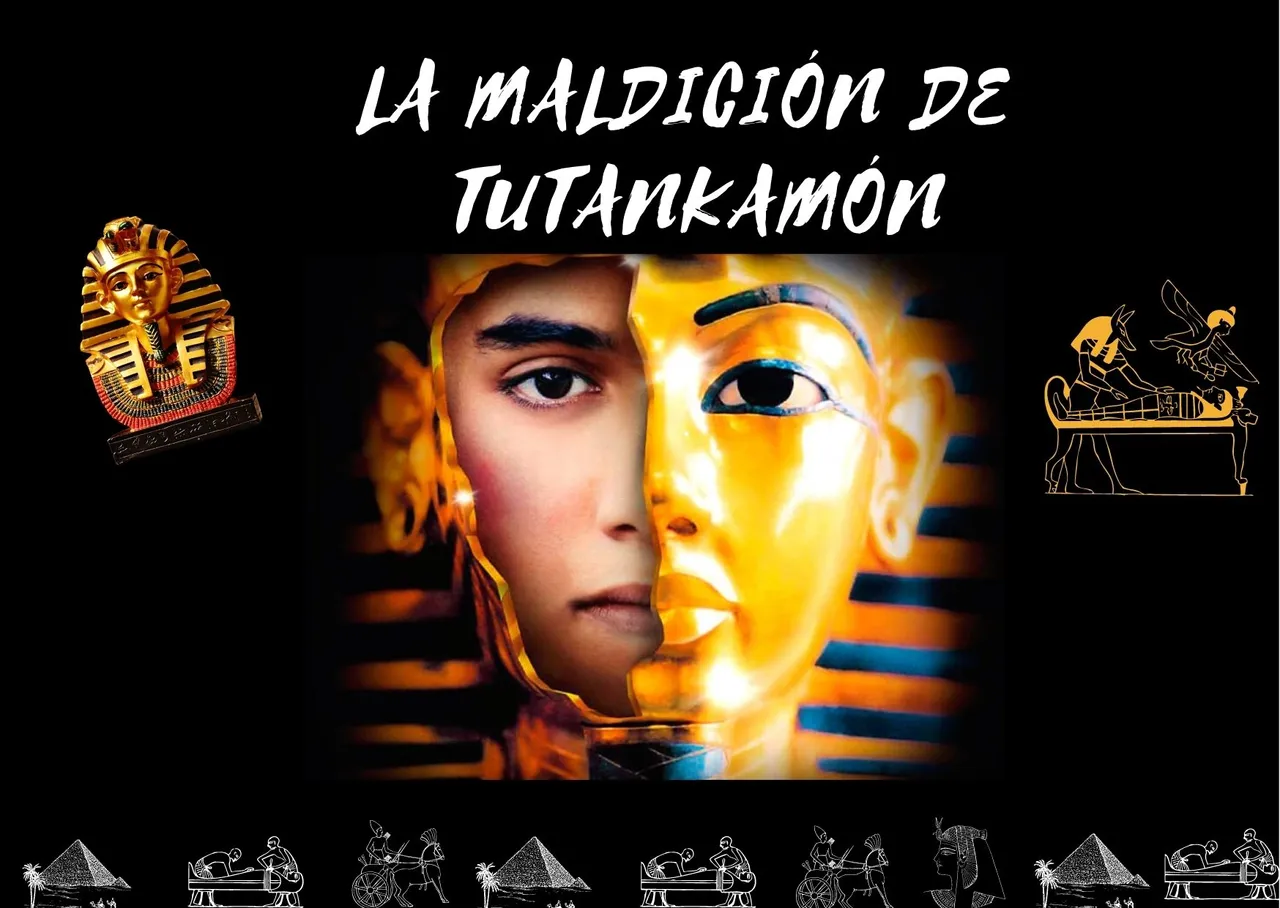
¡Hola, amigos Hivers! Los que ya han leído mi contenido antes, saben que me gusta mucho hablar acerca del antiguo Egipto, por sus momias, pirámides y majestuosidad, pero en todo ello no podemos pasar por alto un tema que, realidad o no, siempre ha estado presente cuando se habla de momias, me refiero a las maldiciones. En este artículo les traigo todos los detalles que se conocen en cuanto a la maldición de la momia más famosa del mundo, estoy hablando desde luego de Tutankamón. ¿De verdad crees que dejó una maldición en su tumba, o lo que sucedió es solo un montón de infortunadas casualidades?
Hello, Hivers friends! Those who have already read my content before, know that I really like to talk about ancient Egypt, for its mummies, pyramids and majesty, but in all this we cannot ignore a topic that, reality or not, has always been present when there is talk of mummies, I mean curses. In this article I bring you all the details that are known regarding the curse of the most famous mummy in the world, I'm speaking of course about Tutankhamun. Do you really think he left a curse on his grave, or is what happened just a bunch of unfortunate coincidences?

El descubrimiento del faraón
The discovery of the pharaoh
En 1923, el egiptólogo inglés Howard Carter, financiado por su mecenas Lord Carnarvon, hicieron un descubrimiento interesatísimo para el mundo de la egiptología, se trataba de una tumba que fue catalogada en el registro con el código KV62, pero mundialmente se conoció como La Tumba de Tutankamón, faraón de la XVIII dinastía.
In 1923, the English Egyptologist Howard Carter, financed by his patron Lord Carnarvon, made a very interesting discovery for the world of Egyptology, it was a tomb that was cataloged in the registry with the code KV62, but worldwide it was known as The Tomb of Tutankhamun, pharaoh of the XVIII dynasty.
El proceso de excavación llevó muchísimo tiempo, pero Lord Carnarvon quiso estar presente desde el descubrimiento, así que viajó a Egipto con su hija y desde ese momento se involucró en el proceso, mucho más allá de su participación como mecenas.
The excavation process took a long time, but Lord Carnarvon wanted to be present since the discovery, so he traveled to Egypt with his daughter and from that moment he was involved in the process, far beyond his participation as a patron.
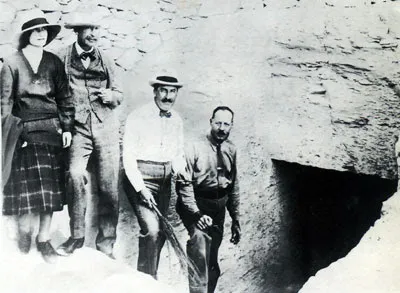
Un día de noviembre de 1922 ocurrió algo extraño, la mascota de Howard Carter, un hermoso canario, fue devorado por una serpiente cobra en su jaula (debemos recordar que dentro de la simbología egipcia, la cobra es sinónimo de poder y realeza). En ese momento nadie relacionó el hecho con la supuesta maldición, pero más adelante lo tomaron como una advertencia.
One day in November 1922 something strange happened, Howard Carter's pet, a beautiful canary, was eaten by a cobra snake in his cage (we must remember that within Egyptian symbolism, the cobra is synonymous with power and royalty). At that time no one related the fact to the alleged curse, but later they took it as a warning.
Los días pasaban mientras el egiptologo Carter, Lord Carnarnon y todo el equipo, avanzaban hacia la cámara mortuoria del faraón, tenían muy buenas expectativas luego de haber visto e inventariado la gran cantidad de objetos que estaban en la antecámara.
The days passed as the Egyptologist Carter, Lord Carnarnon and the entire team advanced towards the pharaoh's burial chamber, they had very good expectations after having seen and inventoried the large number of objects that were in the antechamber.
Finalmente Carter pudo abrir un agujero en el sello de la puerta de la cámara, y acercó una vela para poder observar al menos un poco de lo que se encontrarían cuando retiraran todo el sello. Detrás de él todos estaban en ascuas, el recinto se quedó en silencio para escuchar lo que Carter tenía que decir, pero el egiptólogo se había quedado callado, probablemente demasiado asombrado para hablar, entonces Lord Carnarvon, sin poder contenerse más le preguntó:
Eventually Carter was able to poke a hole in the seal on the chamber door, and held up a candle so that he could see at least a little of what they would find when they removed the entire seal. Behind him everyone was anxious, the room was silent to listen to what Carter had to say, but the Egyptologist had fallen silent, probably too astonished to speak, then Lord Carnarvon, unable to contain himself any more asked him:
—¿Y bien, puede usted ver algo?
"Well, can you see something?"
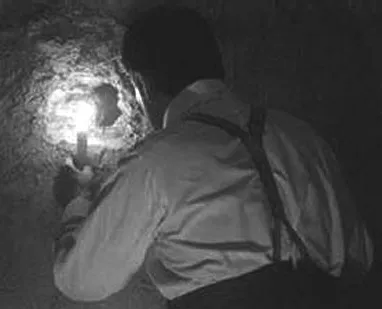
Entonces Carter se giró para encararlo mientras esbozaba una sonrisa, y respondió con la iconica frase:
Then Carter turned to face him with a smile, and responded with the iconic phrase:
—Sí, cosas maravillosas.
"Yes, wonderful things."
Aunque el egiptólogo británico lo negaría más tarde, algunos investigadores afirmaron que lo primero que Carter encontró fue un ostracon (una pieza realizada en arcilla o cerámica, normalmente usada como alternativa más económica al papíro) de arcilla, cuya inscripción geroglífica denotaba una clara advertencia.
Although the British Egyptologist would later deny this, some researchers claimed that the first thing Carter found was an ostracon (a piece made of clay or pottery, usually used as a cheaper alternative to papyrus) of clay, whose hieroglyphic inscription denoted a clear warning.
«La muerte golpeará con su miedo a aquel que turbe el reposo del faraón»
"Death will strike with its fear the one who disturbs Pharaoh's rest"
Algunos testigos afirman que el 16 de abril de 1923, es decir, la fecha en que se abrió oficialmente la cámara, Arthur Weigall (director del Servicio de Antigüedades Egipcio) estaba allí, y en un arrebato de envidia le dijo a Lord Carnarvon que si él accedía al interior de la cámara y molestaba al faraón, moriría seis semanas más tarde.
Some witnesses claim that on April 16, 1923, that is, the date the chamber was officially opened, Arthur Weigall (director of the Egyptian Antiquities Service) was there, and in a fit of envy he told Lord Carnarvon that if he accessed the inside of the chamber and disturbed the pharaoh, he would die six weeks later
Todos comienzan a caer
They all start to fall
Lo crean o no, seis semanas más tarde después de haber entrado en la tumba de Tutankamón, Goeorge Herbert, mejor conocido como Lord Carnarvon, mecenas de Carter, murió. El hombre tenía una picadura de mosquito en la mejilla y mientras se afeitaba, se causó un corte en la zona de la picadura, lo que causó una infección que agravó su pulmonía. Lo más curioso de este hecho es que, después de que un experto analizó a través de rayos X, la momia de Tutankamón, se descubrió que el faraón tenía una herida en la mejilla.
Believe it or not, after entering Tutankhamun's tomb, Goeorge Herbert, better known as Lord Carnarvon, Carter's patron, died. The man had a mosquito bite on his cheek and while shaving, he cut himself at the site of the bite, causing an infection that exacerbated his pneumonia. The most curious thing about this fact is that, after an expert analyzed Tutankhamun's mummy through X-rays, it was discovered that the pharaoh had a wound on his cheek.
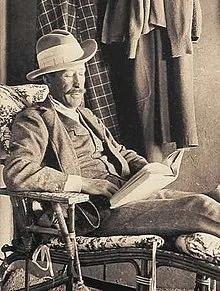
Para colmo ocurrieron otros hechos insólitos: al mismo tiempo que Carnarvon murió en Egipto, su perra Susie aulló y cayó muerta en Londres, además, las crónicas cuentan que ese día hubo un apagón en toda la ciudad de El Cairo que la compañía eléctrica no pudo explicar.
To make matters worse, other unusual events occurred: at the same time that Carnarvon died in Egypt, his dog Susie howled and fell dead in London, in addition, the chronicles say that that day there was a blackout throughout the city of Cairo that the electricity company could not explain.
La gente inmediatamente se acordó de la advertencia hallada en la tumba, y por esa razón, la prensa, que estaba ávida de sensacionalismo, empezó a anunciar en los periódicos la muerte de Lord Carnarnon, atribuyéndosela a la supuesta maldición, a pesar de que Carter negaba haber encontrado dicha advertencia, lo que a su vez podía ser tomado como una estrategia precisamente para evitar el sensacionalismo.
People immediately remembered the warning found on the tomb, and for that reason, journalists, who were greedy for sensationalism, began to advertise Lord Carnarnon's death in the newspapers, attributing it to the alleged curse, despite Carter denied having encountered such a warning, which in turn could be taken as a strategy precisely to avoid sensationalism.
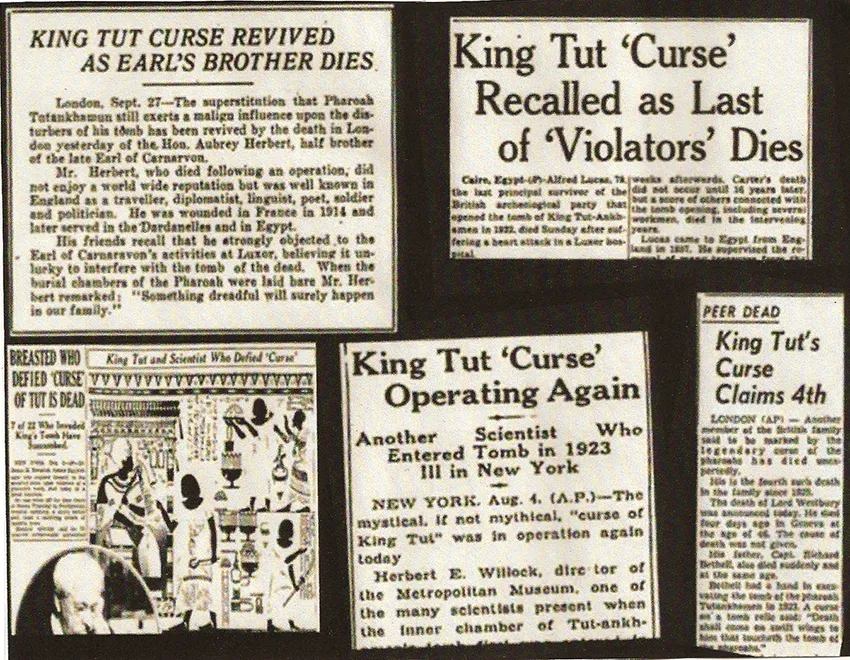
Posteriormente, ese mismo año, el hermano de Lord Carnarvon, Aubrey Herbert (que había ido a visitar la tumba) se suicidó en medio de un ataque de locura.
Later that year, Lord Carnarvon's brother Aubrey Herbert (who had gone to visit the tomb) committed suicide in the midst of a fit of insanity.
George Jay Gould, un magnate norteamericano que visitó la tumba ese mismo año, murió poco tiempo después, por causas de un resfriado que se agravó.
George. Jay Gould, an American mogul who visited the grave that same year, died shortly thereafter of a cold that worsened.
Años después, en 1926, Sir Archivald Douglas Reid, la persona que radiografió a la momia para analizarla, se enfermó de forma repentina. El hombre decidió retornar a Suiza para intentar recuperarse, pero murió dos meses más tarde.
Years later, in 1926, Sir Archivald Douglas Reid, the person who X-rayed the mummy for analysis, suddenly fell ill. The man decided to return to Switzerland to try to recover, but died two months later.
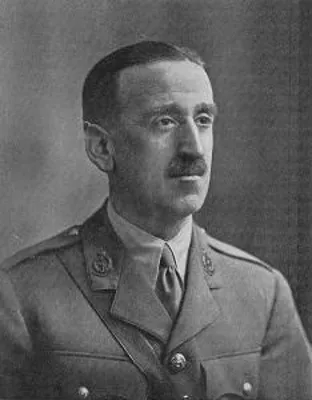
En 1928 también murió Arthur Mace, el asistente de Carter además de la persona que había dado el último golpe al muro que sellaba la cámara mortuoria. La causa de su muerte fue un infarto.
In 1928, Arthur Mace, Carter's assistant as well as the person who had struck the last hit to the wall that sealed the burial chamber, also died. The cause of his death was a heart attack.
En 1929, muere Richard Bethell, el secretario de Howard Carter, falleció después de acostarse a dormir. La causa de su muerte es inexplicable.
In 1929, Richard Bethell dies, Howard Carter's secretary, he passed away after going to bed to sleep. The cause of his death is inexplicable.

Todo el mundo estaba nervioso a propósito de las muertes, porque todas esas personas estaban relacionadas directa o indirectamente con la excavación a la tumba o con la momia.
Everyone was nervous about the deaths, because all those people were directly or indirectly related to the excavation of the tomb or the mummy.
En 1939, un camión que transportaba las trompetas halladas en el interior de la tumba de Tutankamón, se precipitó por un barranco y el conductor murió.
In 1939, a truck carrying the trumpets found inside the tomb of Tutankhamun fell into a ravine and the driver died.
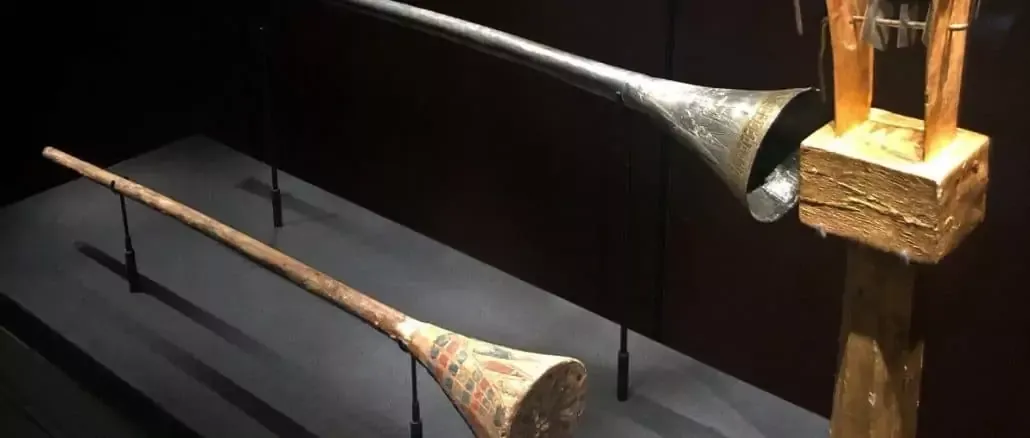
En total se han atribuido al menos 30 muertes a la supuesta maldición del faraón, pero yo solo les presenté las más relevantes y nombradas.
In total, at least 30 deaths have been attributed to the supposed curse of the pharaoh, but I only presented the most relevant and named ones.

Hecho ineplicable
Ineplicable fact
Ese mismo año, los productores de un programa radial, convencieron al Servicio de Antigüedades Egipcio para transmitir en un programa radial, el sonido de la trompeta de plata, no obstante, cinco minutos antes de la transmisión, las luces se apagaron inexplicablemente, por lo tanto la grabación se hizo mientras alumbraban con velas.
That same year, the producers of a radio program convinced the Egyptian Antiquities Service to broadcast on a radio program, the sound of the silver trumpet, however, five minutes before the broadcast, the lights inexplicably went out, so both the recording was made while lighting with candles.
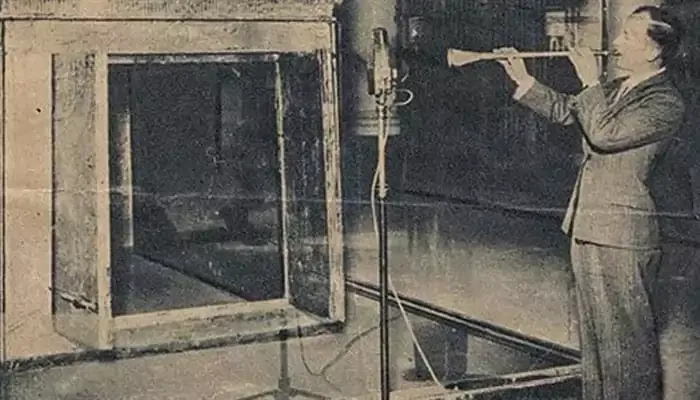
James Tappern fue el músico encargado de tocar la trompeta, pero poco después de eso estalló la segunda guerra mundial. Muchos afirman que el sonido de la trompeta despierta las guerras pues cada vez que se escuchó, el hecho coincidió con conflictos grandes, como levantamientos en Egipto, la guerra del Golfo y hasta la Segunda Guerra Mundial.
James Tappern was the musician in charge of playing the trumpet, but shortly after that World War II broke out. Many claim that the sound of the trumpet awakens wars because each time it was heard, the event coincided with major conflicts, such as uprisings in Egypt, the Gulf War and even World War II.

Opinión científica
Scientific opinion
Tumba de Tutankamón actualmente.
Tomb of Tutankhamun today.
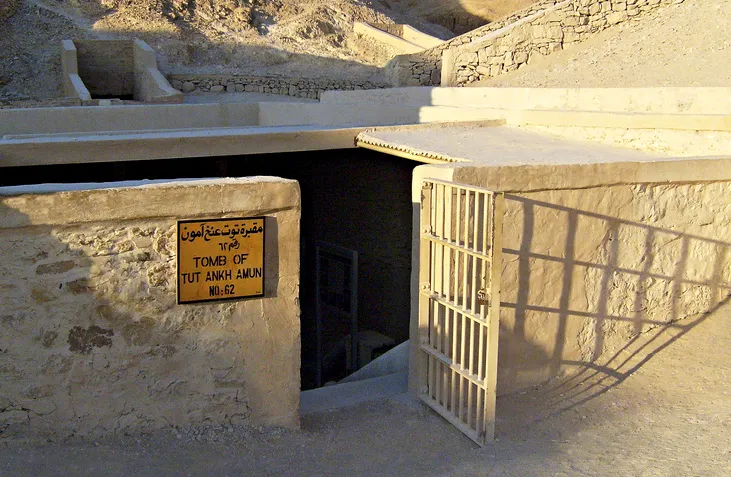
Para los egiptólogos y arqueólogos no es raro encontrarse con advertencias en las tumbas reales egipcias, pues era la forma en que los faraones intentaban proteger sus últimas moradas, apelando al temor, por esa razón sus escribas dejaban inscripciones con advertencias en los pasillos, paredes de las cámaras o incluso en los sarcófagos
For Egyptologists and archaeologists it is not uncommon to find warnings in the Egyptian royal tombs, as it was the way in which the pharaohs tried to protect their last abodes, appealing to fear, for that reason their scribes left inscriptions with warnings in the corridors, walls of cameras or even sarcophagi
Pero ninguno de ellos, y mucho menos los científicos cree que haya sido precisamente una maldición la que acabó con las personas que estuvieron relacionadas con la excavación de Carnarvon y Carter (quien murió en 1939 en Londres debido a la enfermedad de Hodgkin) al menos tienen una explicación para los que murieron por infecciones como Lord Carnarvon, pues es evidente que en el interior de una tumba que ha estado sellada por más de tres mil años, pueden existir esporas y demás microorganismos que hayan perdurado y pululado con el paso de los años, y al ser un espacio sin ventilación, entraría directo al organismo de algunos de ellos, eso sí, esta explicación nos dejan con otras preguntas como... ¿por qué esas esporas no afectaron a todos, o al menos a la mayoría? ¿Por qué murió Susie, la perrita de Lord Carnarvon? ¿Qué explica las demás muertes?
But none of them, much less scientists believe that it was precisely a curse that killed the people who were related to the excavation of Carnarvon and Carter (who died in 1939 in London due to Hodgkin's disease) at least they have an explanation for those who died from infections like Lord Carnarvon, since it's evident that inside a tomb that has been sealed for more than three thousand years, there may be spores and other microorganisms that have persisted and swarmed over the years, and being a space without ventilation, it would enter directly into the body of some of them, yes, this explanation leaves us with other questions such as... why did these spores not affect everyone, or at least most? Why did Susie, Lord Carnarvon's dog die? What explains the other deaths?
La momia de Tutankamón, actualmente en su cámara funeraria después de haber sido renovada.
Tutankhamun's mummy, currently in his burial chamber after being renovated.
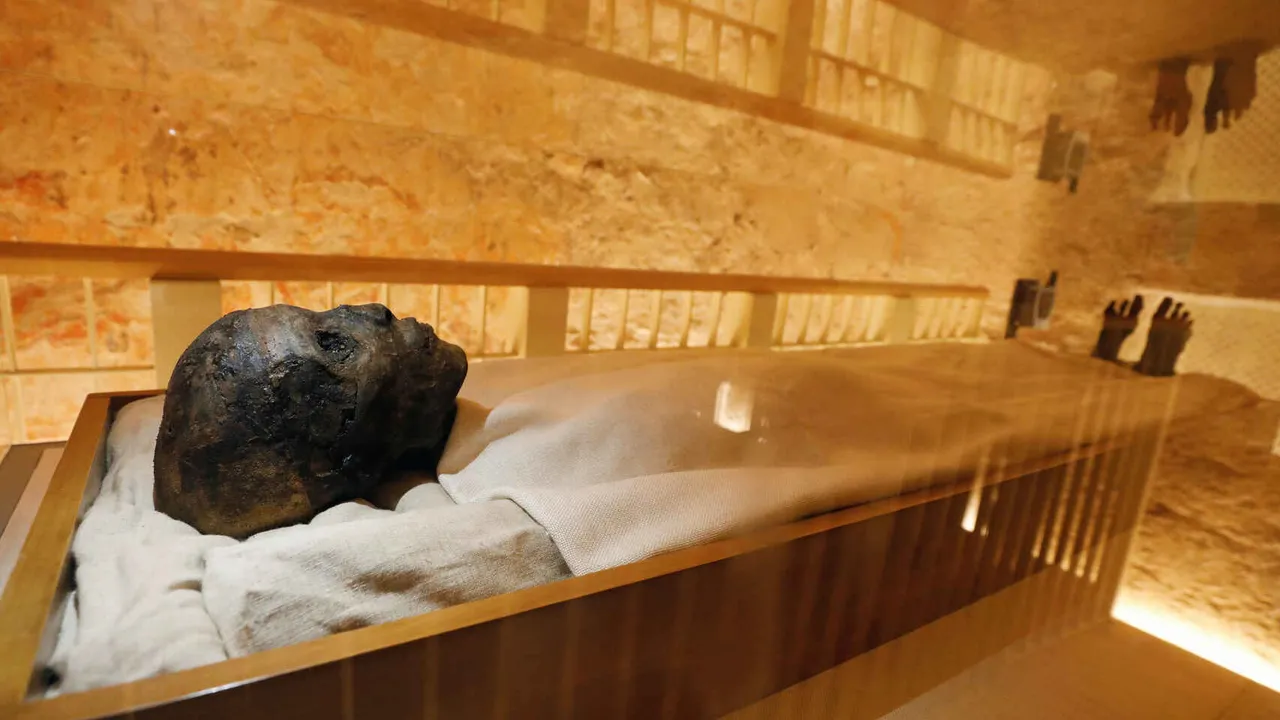
Pues eso también podría tener explicación, ya que los datos de los medios de comunicación ingleses sobre el número de personas muertas resultaron ser falsos, porque solo se confirmó la muerte de ocho personas en un periodo de doce años después de la apertura de la tumba. Aún así hay quien sostiene que los datos son ciertos, pero a nosotros solo nos quedará ser meros espectadores y creer lo que queramos ¿no es cierto?... ¿Qué opinan ustedes?
Well, that could also have an explanation, since the data from the English media on the number of dead people turned out to be false, since only eight people were confirmed dead in a period of twelve years after the opening of the tomb. Even so, there are those who maintain that the data is true but for us, we will only have to be mere spectators and believe what we want, right? ... What do you think?
Personalmente siempre he creído que, independientemente de que exista o no una maldición en torno a las tumbas egipcias, por principios éticos y por respeto, las momias no deberían retirarse de sus moradas, es decir, estoy de acuerdo con su estudio, pero no con que las saquen de sus tumbas de forma permanente, porque evidentemente esa no sería la última voluntad de los faraones.
Personally I have always believed that, regardless of whether or not there is a curse around Egyptian tombs, out of ethical principles and respect, mummies should not be removed from their dwellings, that is, I agree with their study, but not with that they remove them from their tombs permanently because obviously that would not be the last will of the pharaohs.
Muchas gracias por su atención, amigos, esto ha sido todo por el artículo de hoy, espero que les haya gustado mucho. Gracias por su apoyo.
Thank you very much for your attention, friends, this has been all for today's article, I hope you liked it a lot. Thanks for your support.
